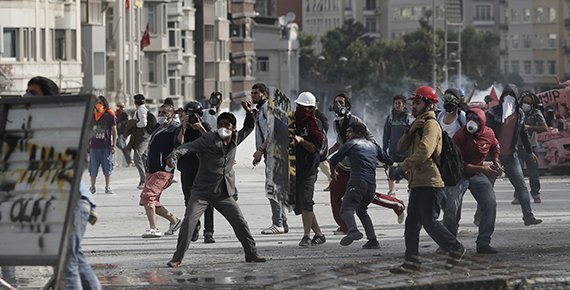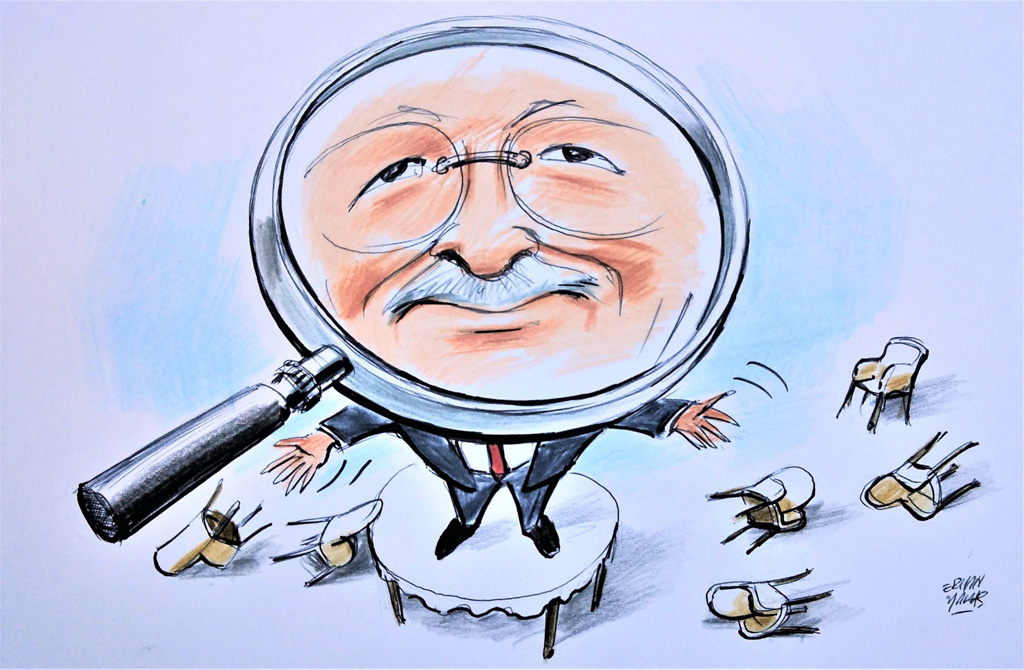Taksim, an otherwise major attraction point for many foreign visitors, has been hit with protests for the last couple of weeks. A tiny sit-in in a tiny park at the heart of Istanbul morphed into a sizeable but amorphous protest movement against the ruling Justice and Development Party (AK Party) and its leader PM Recep Tayyip Erdoğan. Since then, the protest movement has attracted big, and in some cases disproportional, attention from many at home and abroad.
On the one hand, the amorphous style of the protest and the evolution it went through since its inception on late May until the third week of June, when it began to deflate, made understanding the roots of it rather difficult. On the other hand, its evolution from a local incident into international breaking news and the way the Western media portrayed it in comparison with the Arab uprisings made many to question the agenda of outside actors.
For those who tend to see the world black and white both at home and abroad, what happened in Taksim must be something between authoritarianism and democracy. In this line of thinking, the context is more than often sacrificed for political positions. That is to say, the way one adopts politics becomes the sole method of interpreting every single incident, without having the need to set its background and establish its context.
To begin with, the AK Party government was elected for its 3rd term through internationally recognized free elections; and fairly speaking, it has proved to be the strongest democratizing force in the history of the Republic of Turkey. The Turkish democracy, which is still a work in progress, has been consolidated through several reforms implemented and steps taken by the AK Party. This is “History of Turkish Political Development 101”.
TAKSIM’S ‘PHASE 2’
One should analyze the Taksim incident against this background. Incidentally, when one says Taksim, he/she is not speaking of a single phased incident. In the first phase, from the beginning of the sit-in in the Gezi Park to the first intervention of the police to the protesters, the movement was tiny and had a clear, and from an environmentalist perspective, understandable demand, which is the cancellation of the Gezi Park project. It has become clear that there was a huge gap between what the protesters thought the Gezi Park project would bring and what the project was actually proposing. Branding this as a miscommunication or lack of transparency at this point does not mean a lot. Regardless of this gap, having to do crisis management instead of managing the sit-in is a failure on the official side. In this sense, officials unwittingly helped transformation of the protests into the phase 2.
Phase 2 is characterized by culmination of anti-government sentiments run by various motivations. From this moment on, while the protest movement began to diverge politically and socially, it also became vulnerable to political manipulation and outside interference. A tiny group of environmentalists were joined by groups with differing agendas: those who are angry at the first intervention of the police; the social base of the main opposition party CHP seeing this as an opportunity for shaking the AK Party rule, those without a strong party affiliation and some business conglomerates who wanted to settle personal or group accounts with a decade long AK Party rule, as well as marginal and predominantly radical leftist groups and terrorist organizations.
The main body of the protests were hijacked by previously dormant undemocratic groups and turned into a revenge fight against the government. Rejectionism and vandalism followed suit.
Apparently, a decade long AK Party rule, which symbolizes- to use a popular term- the “Turkish Spring”, worked in two ways. It consolidated AK Party’s political and social base, and made it a “dominant party” with no prospects through democratıc means of losing power in the short te








